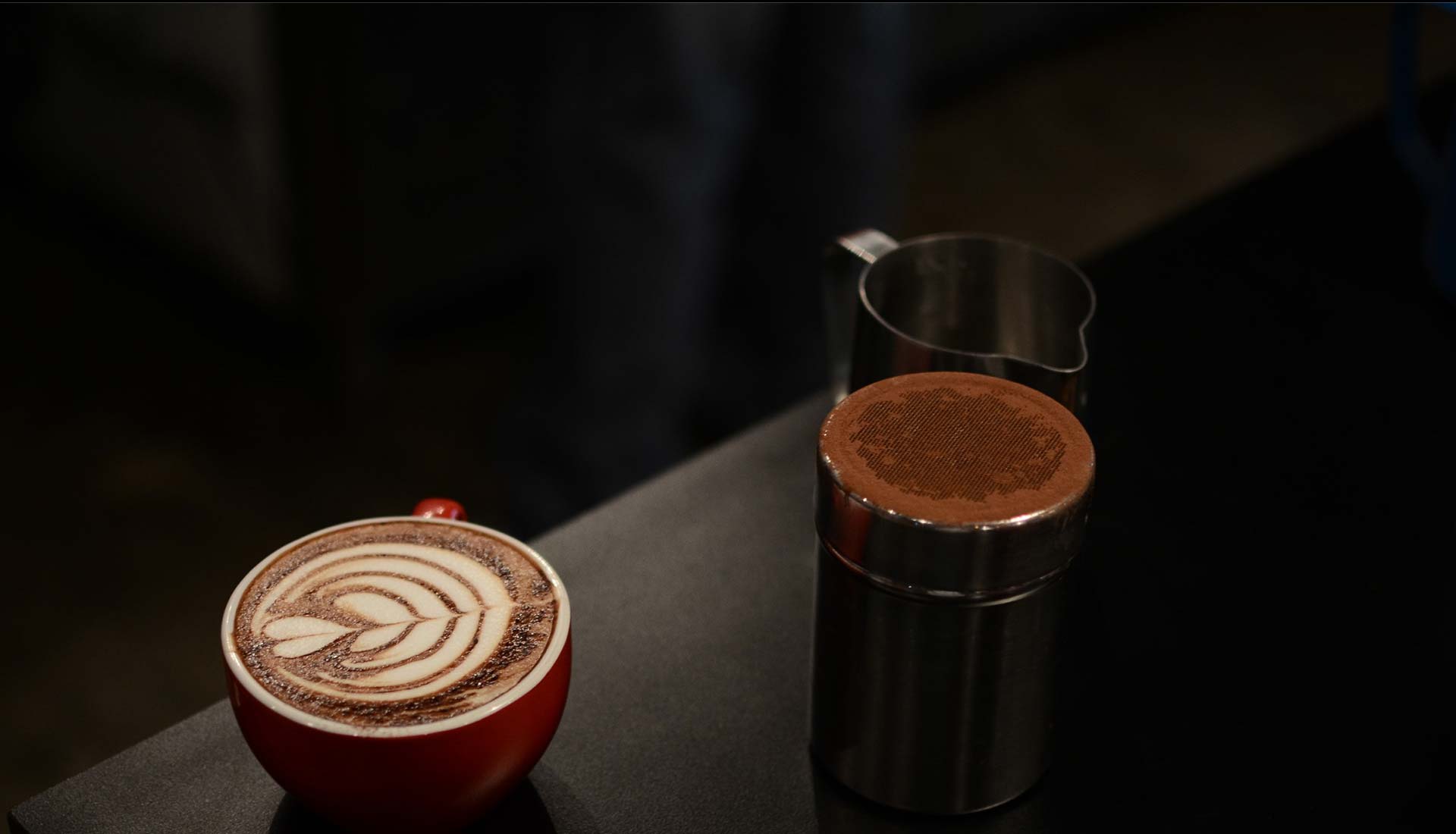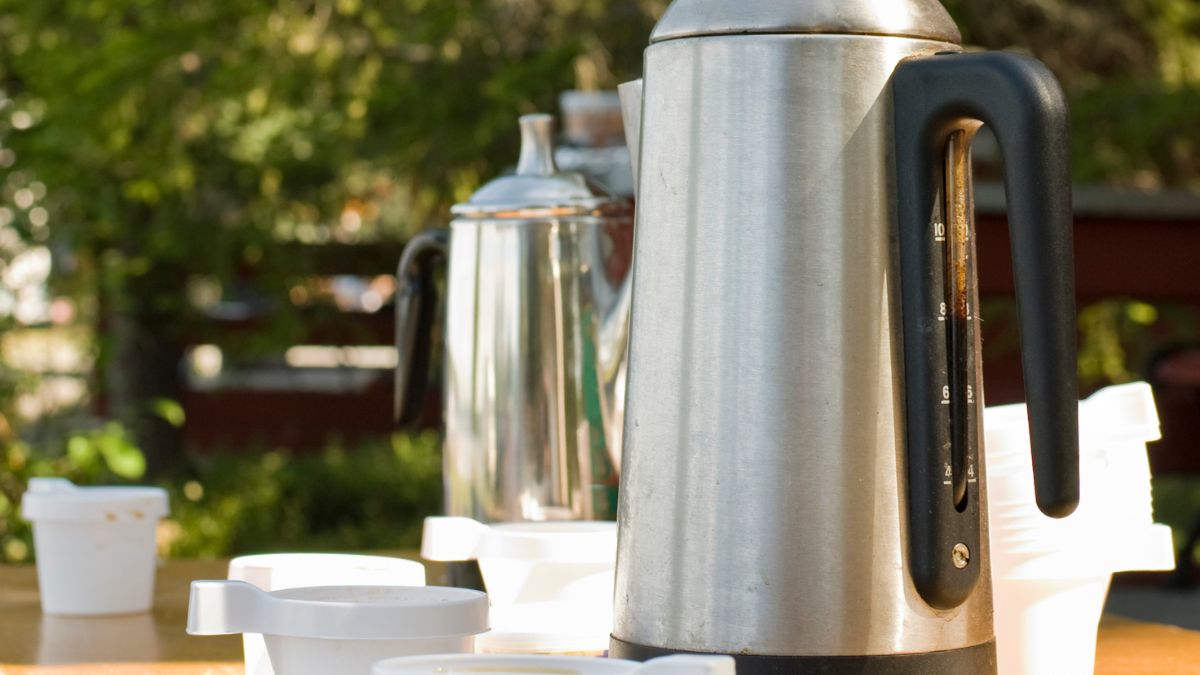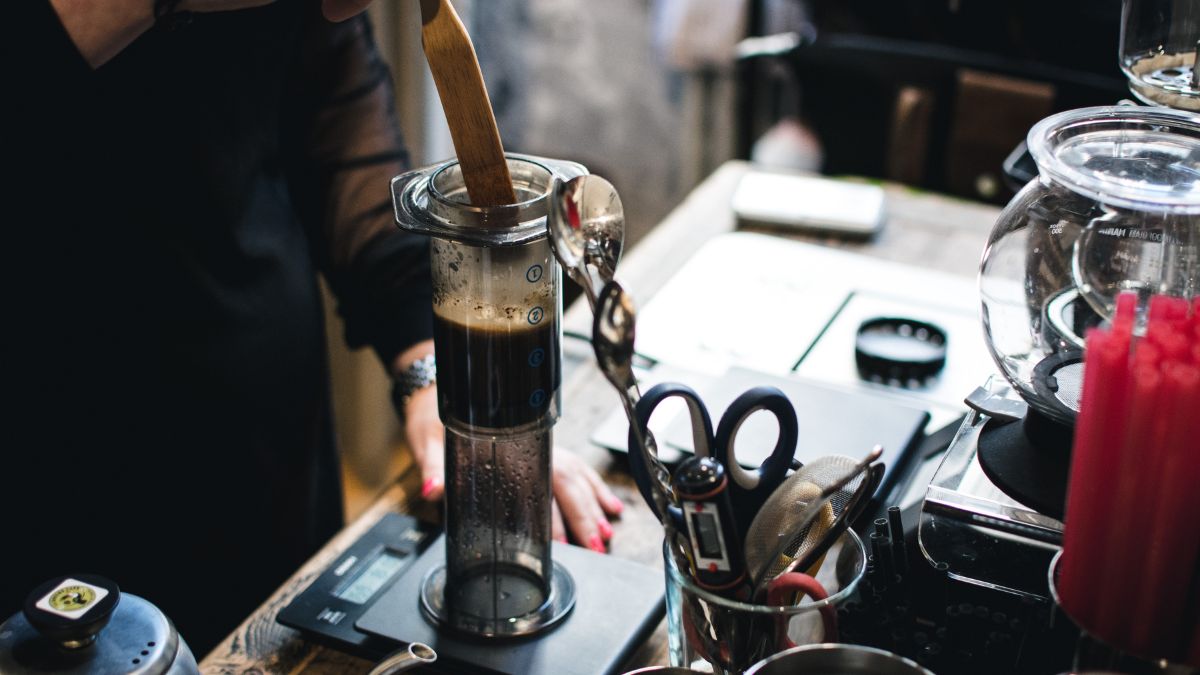
Pressure & Grind Size Complementing Each Other
Pressure in coffee brewing is most popularly thought of with espresso. Pressure forces water through the coffee grounds quickly and uniformly. The average espresso shot is pulled in less than 24 seconds. Pressure speeds along the extraction process and requires finely ground coffee to create the pressure in the first place. Coarsely ground coffee doesn’t allow a machine to create that pressure on the spot of extraction. Finely-ground coffee ensures that the brewing water will not pass through the grinds too fast or at too little pressure (usually measured in Bars).
Bringing Together all the Brewing Variables
As you have seen, there are a lot of variables that you can adjust. Usually adjusting one variable necessitates that you adjust one or more other variables to create a desirable extraction and brew.
That is where Brew Methods come to play. These are methods of brewing coffee that are tried and true. They have general best practices to follow that allow you to get the most out of your home brewing efforts. The popular home brewing methods are:
- Turkish/Arabian
- Espresso/Aeropress
- Pour-over
- French Press/Percolator
- Cold Brew
Turkish/Arabian – Extra Fine
Turkish and Arabian brewing methods depend on very fine ground coffee. Turkish grind size is about the consistency of flour and requires a Burr grind to achieve. The reason for this is that the coffee grounds are brewed directly in the heated brewing water but are never filtered out. This makes a very rich, smooth, and potent cup of coffee. This is definitely something to try with Sphynx Coffeehouse coffees.
Espresso/AeroPress – Fine
Espresso and AeroPress both rely on heat and pressure over a short amount of time to achieve quality results. This requires coffee to be ground ‘fine’ and is the consistency of table salt (if not just a little finer). This size of grind is also used in Mokha Pots/stovetop brewers.
Pour-Over – Medium-Fine
Grind size for pour-over is about the average of what you see in most 1 lb. pre-ground coffees on the market. Pour-overs utilize a brewing cone and a paper filter (though metal filters do exist). This is one of the most popular single-serve brewing methods out there and requires a medium-fine grind. The cone filter limits the amount of water that can pass through. This allows a slightly coarser grind while still achieving adequate extraction. Most of our customers use our coffees in pour-overs starting out. The consistency of medium-fine coffee is that of fairly smooth beach sand.
French Press/Percolator – Medium to Medium-Coarse
French Presses increase the brewing time and also the type of exposure the coffee has to the brewing water. Like Turkish, the grinds are mixed with the water directly. Unlike Turkish is that you filter the grinds out once done brewing. This requires a coarser grind which limits the surface area for direct extraction. The consistency of this grind is close to rough sand.
Cold-Brew – Coarse to Extra Course
Cold-brew uses low brewing temperatures and long brewing times to achieve its effects. Brewing times can range from 6 to 24 hours. The longer brewing time calls for the coarsest grinds so as to not over-extract the coffee during the process. The slow and coarse combination makes for a very smooth drink. Cold Brews have risen in popularity over the last 7 years but you can make it at home with this knowledge.
Strike the Right Balance
This guide should arm you with the knowledge to choose what grind you need for your preferred brewing method. We’re happy to pre-grind coffee for you or get you whole bean coffee to grind yourself. All of our options allow this choice so that you can have a great brew.






